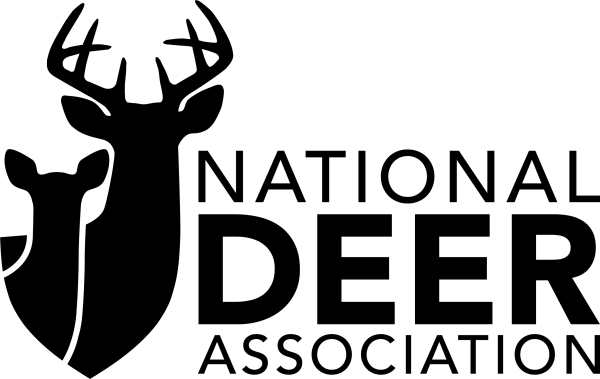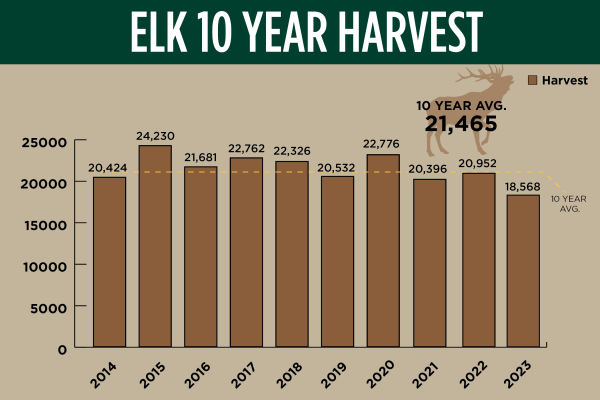Aging Deer on the Hoof
By Kip Adams
QDMA Director of Education and Outreach, Northern Region
Harvesting white-tailed bucks based on age is becoming an increasingly common management strategy. To implement this practice, hunters must have the ability to accurately age bucks on the hoof based on their body characteristics, an ability that most hunters considered impossible a decade ago. Today however, hunters across the whitetail’s range are estimating the age of bucks in the field as a means for selective harvest within Quality Deer Management programs or merely for the fun of it.
Like humans, whitetails possess distinct body characteristics by age class, and with a little practice hunters and nonhunters alike can become proficient at estimating the age of bucks on the hoof. There are many good reference books, videos and DVDs available for in-depth instruction and practice on aging bucks, and this article serves to introduce the topic and highlight the differences for each age class from fawns to post-mature animals. These body characteristics are subject to differing interpretation by different viewers, but the characteristics are relative to others in your area or region. Body characteristics also change by season. The breeding season is the best time of year to age bucks because of pronounced neck swelling and tarsal staining. You can estimate their age at other times of the year, but many characteristics are viewed relative to what they will (or did) look like during the rut.
Fawns
Fawns are easily distinguished from other age classes of bucks but are commonly misidentified as female deer. Buck fawns have small square bodies, small short heads and relatively large ears. Their heads are flatter between the ears rather than rounded like that of a doe. The distance from their ear to eye is also approximately the same as the distance from their eye to nose. In contrast, the distance from an adult doe’s ear to eye is much shorter than from its eye to nose. Fawns also have short necks, flatter bellies and backs, and less muscle definition than adult does. The Quality Deer Management Association (QDMA) has produced an educational poster, “Identifying Antlerless Deer,” that uses close-up photography of live deer to help you learn to sort fawns from adult does and buck fawns from doe fawns using these characteristics. This makes a great visual tool for teaching hunting-club members or guests how to avoid harvesting buck fawns.
1½ years
For most QDM programs, especially those in beginning stages, learning to identify yearling bucks is the most important aging skill. Yearling bucks have long legs, a thin neck, a slim body and an overall lanky appearance. Their legs appear too long for their bodies because their torsos (stomach, chest and neck) are not fully developed. Their antler spread is nearly always less than the width of their ears when their ears are in an alert position. They have a distinct line of separation between their neck and shoulders and little muscle definition. They have a thin waist, and they may have slight staining in their tarsal glands during the rut. Overall, a yearling buck can be said to look like a doe with antlers. In well-managed populations on high-quality-habitat, yearling bucks can have large bodies and even 10 or more antler points, but the above characteristics will be present and can be used to separate them from 2½-year-olds. This is why it is important to study body characteristics before considering antler size when attempting to age a buck in the field.
2½ years
Two-year-olds have legs that still appear too long for their bodies, and they still have an overall sleek appearance. They have developed some muscling in their shoulders and slight swelling in their neck during the rut, but their waist is still thin. Given adequate nutrition, their antler spread can be equal to or wider than their ears. Finally, they can have moderate staining in their tarsal glands during the rut, especially if few mature bucks are in the population.
3½ years
Three-year-olds have legs that appear to be the right length for their bodies because their torsos are now more fully developed. They have muscled shoulders and a highly swelled neck during the rut, but their waist is still lean. I liken three-year-olds to middle linebackers as they are big and strong but they’re also lean and fast. A deep chest and lean waist give them a “racehorse” appearance. Their antler spread can be even with or wider than their ears. Research shows that at this age, most bucks have achieved 50 to 75 percent of their antler-growth potential. They also have a lot of tarsal staining during the rut.
Beyond 3½ years of age, determining the exact age of a buck becomes more difficult because of increased variation among individual bucks. However, for most QDM programs, harvest goals can be achieved if hunters are able to confidently separate bucks into one of three groups: A) Yearlings, B) 2½-year-olds, and C) 3½ or older. Hunters who want to sort and select bucks based on ages older than 3½ can still do so, but more time spent studying each buck may be required. In addition to viewing in the field, use trail-camera photos and home-video footage to refine your estimates. Also, once a buck has been harvested, check your own field estimates against age estimates based on toothwear and/or cementum annuli ages from a reputable lab. This will help you hone your skills at aging the deer in your region or habitat type.
4½ years
Because their stomachs, chests and necks are now fully developed, most four-year-olds have legs that appear too short for their body. They have fully-muscled shoulders, heavy swelling in their neck during the rut, and their waist has dropped down to become even with their chest. Given adequate nutrition they’ll become structurally mature and can reach 75 to 90 percent of their antler growth potential. They also have a lot of tarsal staining and during the rut the stain may extend below the tarsal gland. Four-year-olds have an entirely different appearance than one- to three-year-old bucks.
5½ to 7½ years
Other than in select places, few free-ranging bucks exceed five years of age so I’ll combine five- to seven-year-olds. Bucks in this category have legs that appear too short for their body. They also have several other characteristics of four year olds including fully-muscled shoulders, heavy swelling in their neck during the rut, and a waist that’s even with their chest. However, they also may have a pot belly and a sagging back. Their increased body mass gives them a more rounded appearance, and they may look like a small cow. They will have achieved 90 to 100% of their antler growth potential, and they can have highly stained tarsal glands during the rut, with the stain extending well below the tarsal gland.
8½ and older
A few free-ranging bucks make it to the post-mature age category. These bucks have passed their prime and regress in both body and antler size. They generally have loose skin on their face, neck and shoulders – usually visible as a “chin flap” – and they may have pointed shoulder and hip bones. Their antlers can show age-related abnormalities such as abnormal points or wavy or curvy tines, and they have an overall “weathered” appearance.
As you study age-specific body characteristics you’ll notice there aren’t age-specific antler characteristics (other than the range of antler potential that may be reached at each age class, and this percentage can’t be accurately estimated by viewing the antlers). Therefore, I suggest you don’t rely solely on antler size when aging bucks. Large antlers on a younger deer and small antlers on an older deer can negatively influence your estimated age. I prefer to estimate age based solely on body characteristics with respect to location and time of year and then use antler size to “check” my estimate or to break a tie if I can’t decide between two ages.
For more assistance, I recommend the book “Observing and Evaluating Whitetails” by Dave Richards and Al Brothers, as well as the pocket field guide to aging bucks produced as a companion to this book. Also, QDMA has produced an educational poster, “Estimating Buck Age,” that uses photos of live bucks of known ages to illustrate variations in body characteristics by age class. Again, this makes a great visual aid for educating hunters. All of these items are available at www.QDMA.com.
Aging bucks on the hoof is a lot of fun so whether you hunt them with a bow, sporting arm or camera, this information can make you a more knowledgeable whitetail enthusiast.
Kip’s Korner is written by Kip Adams, a Certified Wildlife Biologist and Northern Director of Education and Outreach for the Quality Deer Management Association (QDMA). The QDMA is an international nonprofit wildlife conservation organization dedicated to ethical hunting, sound deer management and preservation of the deer-hunting heritage.
The QDMA can be reached at 1-800-209-DEER or www.QDMA.com.






